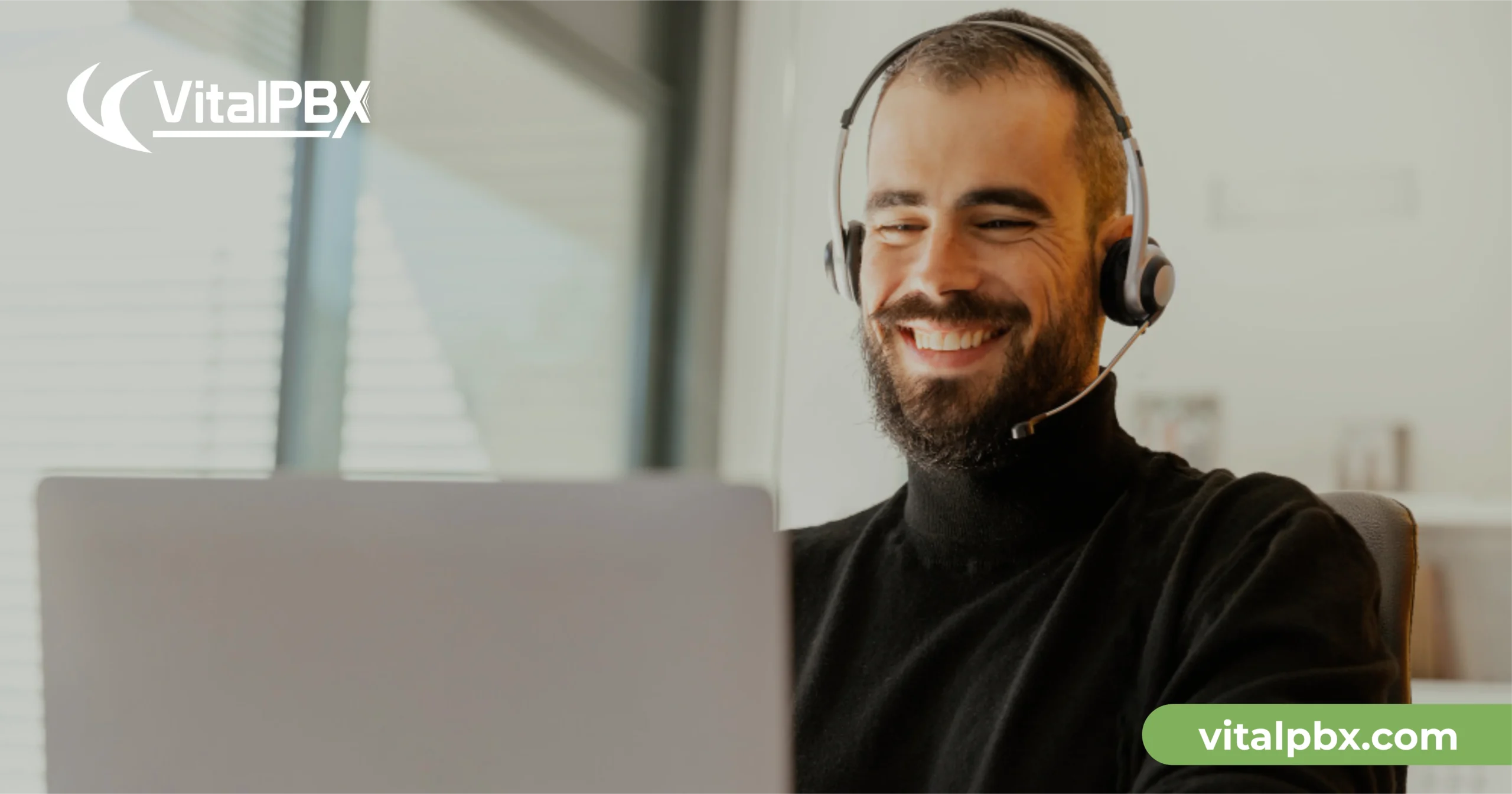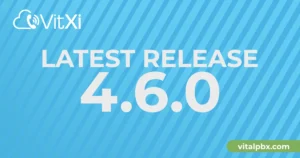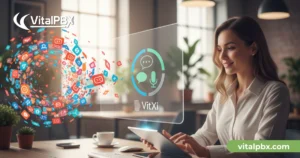Guide to PBX Auto Attendants in 2025: Your 24/7 Virtual Receptionist
Imagine never missing a customer call again. Picture a world where every caller is greeted professionally and directed to the right person instantly, day or night, without lifting a finger. This isn’t a futuristic fantasy; it’s the reality for businesses leveraging a PBX auto attendant. This powerful tool acts as a digital front door, ensuring you make a great first impression every single time.
In today’s fast-paced market, customer expectations are higher than ever. A missed call can mean a lost customer. A frustrating phone menu can damage your reputation. This guide will explore how a modern PBX auto attendant can solve these challenges, transforming your business communications, enhancing customer experience, and boosting your bottom line in 2025 and beyond.
Demystifying the PBX Auto Attendant: Your Business’s First Point of Contact
At its core, a PBX auto attendant, often called a virtual receptionist, is an automated menu system that greets callers and routes their calls to the appropriate extension or department without the need for a human operator. It’s the friendly, professional voice that answers your main business line and presents callers with a simple set of options.
The Core Function: More Than Just a Greeting
While the initial greeting is crucial, the true power of an automated attendant lies in its ability to efficiently manage inbound call traffic. It acts as an intelligent switchboard operator, working around the clock to perform essential tasks.
Key functions include:
- Professional Greeting: Instantly provides a polished, consistent greeting to every caller, reinforcing your brand’s professionalism.
- Call Routing: Directs callers using simple keypad inputs (e.g., “Press 1 for Sales, Press 2 for Support”). This gets customers to the right place on the first try.
- Time-Based Greetings: Plays different messages based on the time of day or day of the week. You can have a standard greeting for business hours, a different one for after-hours, and special messages for holidays.
- Dial-by-Name Directory: Allows callers who know the name of the person they want to reach to find their extension easily by spelling it out on their keypad.
Auto Attendant vs. IVR: Clearing Up the Confusion
The terms “auto attendant” and “IVR” (Interactive Voice Response) are often used interchangeably, but they refer to two distinct technologies. Understanding the difference is key to choosing the right solution for your business needs.
An auto attendant is primarily a routing tool. Its job is to get the caller from Point A (your main number) to Point B (the correct department or person) as smoothly as possible. It’s a one-way information system where the system provides options and the caller makes a selection.
An IVR, on the other hand, is a more advanced, interactive system. It can engage in a two-way dialogue with the caller, collect information, and perform complex tasks by integrating with other business software, like a CRM or billing platform.
Here’s a simple breakdown:
| Feature | PBX Auto Attendant | Interactive Voice Response (IVR) |
| Primary Goal | Call routing and directory | Data collection and self-service |
| Complexity | Simple, menu-based | Complex, database-integrated |
| Interaction | Keypad input (DTMF tones) | Keypad input and voice commands |
| Example Use | “Press 1 for Sales.” | “Please say or enter your account number.” |
| Best For | Directing callers, small to large businesses | Banks, call centers, payment processing |
While VitalPBX offers powerful IVR capabilities, many businesses find that a well-configured auto attendant is the perfect starting point for revolutionizing their call management. For a deeper dive into call center technology, you can explore resources from industry leaders like Gartner.
Why Your Business Needs an Automated Attendant System in 2025
Implementing a PBX auto attendant is no longer a luxury reserved for massive corporations. It has become an essential tool for businesses of all sizes looking to gain a competitive edge. The benefits are tangible, impacting everything from customer perception to operational efficiency.
Enhance Customer Experience and Professionalism
First impressions matter. According to studies, a positive customer experience is a key driver of loyalty. An auto attendant ensures that your first point of contact is always flawless.
- Immediate Response: No caller is ever left with an endlessly ringing phone or a busy signal. Every call is answered instantly, which shows you value their time.
- Polished Image: A clear, professional greeting makes your business, regardless of its size, sound established and trustworthy. It projects an image of a well-organized, customer-focused company.
- Reduced Wait Times: Callers can quickly navigate to the department they need without being placed on hold while a receptionist manually transfers them.
Boost Productivity and Efficiency
One of the most significant benefits is the impact on your team’s productivity. By automating the front line of call handling, you free up valuable human resources.
- Empower Your Staff: Your administrative staff or receptionist can focus on higher-value tasks like customer support, scheduling, and project management instead of simply directing calls.
- 24/7 Availability: An auto attendant doesn’t take breaks or go home at 5 PM. It continues to answer calls, provide information, and take messages after hours, ensuring you never miss a potential lead. For more on improving business communications, check out our article on the top PBX features for small businesses.
- Streamlined Operations: It ensures a consistent process for every inbound call, reducing human error and creating a more efficient internal workflow.
Improve Cost-Effectiveness
An auto attendant offers a remarkable return on investment. By automating call routing, you can significantly reduce operational costs. It can supplement the role of a human receptionist, allowing them to manage more complex responsibilities, or in some cases, even reduce the need for a dedicated operator, leading to substantial salary savings.
Crafting the Perfect Auto Attendant Experience
A poorly planned auto attendant can be more frustrating than helpful. The key to success lies in thoughtful planning and clear execution. Follow these steps to create a system that both you and your customers will love.
Step 1: Planning Your Call Flow
Before you record a single word, map out the caller’s journey. Grab a whiteboard or a piece of paper and sketch out where you want your callers to go.
- Identify Key Destinations: What are the most common reasons people call your business? Typically, this includes Sales, Customer Support, Billing, and a general information option.
- Consider Time Conditions: How will the call flow change after business hours or on weekends and holidays? Plan for specific messages for each scenario. For example, your after-hours message could provide business hours and direct callers to a general voicemail.
- Keep It Simple: Avoid overwhelming callers. The main menu should ideally have no more than 4-5 options. If you need more, consider using a multi-level auto attendant.
Step 2: Writing an Effective Auto Attendant Script
Your script is the foundation of the caller experience. It should be concise, clear, and professional.
Main Greeting (During Business Hours):
“Thank you for calling [Your Company Name]. To ensure you reach the right department, please listen to the following options. For Sales, press 1. For Customer Support, press 2. For Billing, press 3. For our company directory, press 4. To speak with an operator, please press 0 or stay on the line.”
After-Hours Greeting:
“Thank you for calling [Your Company Name]. Our business hours are Monday through Friday, 9 AM to 5 PM. If you know your party’s extension, you may dial it at any time. Otherwise, please leave a message after the tone, and we will return your call on the next business day. Thank you.”
Holiday Greeting:
“Thank you for calling [Your Company Name]. Our offices are currently closed in observance of the holiday. We will reopen on [Date] at [Time]. Please leave a message, and we will get back to you as soon as we return.”
Step 3: Recording Professional Greetings
The quality of your audio recording directly reflects the quality of your brand. A muffled, unclear recording can undermine the professional image you’re trying to create.
- Use a Professional Voice Artist: For the most polished result, consider hiring a professional. The cost is often minimal and provides a high-end feel.
- High-Quality In-House Recording: If you record it yourself, use a good quality microphone in a quiet room free of echoes and background noise. Speak slowly and clearly.
- Consistency is Key: Use the same voice talent for all your greetings to create a consistent and seamless brand experience. The right VoIP system will make uploading and managing these audio files simple.
Frequently Asked Questions About PBX Auto Attendants
To help you make the most of this feature, we’ve compiled answers to some of the most common questions we receive about auto attendants.
What’s the main purpose of an auto attendant?
The primary purpose is to automate and streamline inbound call routing. It professionally greets every caller and directs them to the correct person or department quickly and efficiently, improving customer service and internal productivity.
Can an auto attendant play music on hold?
Yes. Once the caller makes a selection and is being transferred, your PBX system can play music or a custom marketing message on hold. This is a great opportunity to share information about new products or promotions.
How is a virtual receptionist different from a live receptionist?
A virtual receptionist (auto attendant) is an automated system that routes calls based on a pre-set menu. A live receptionist is a human operator who performs this task manually. Many businesses use an auto attendant as the first point of contact, with an option to transfer to a live receptionist if needed.
Is setting up an auto attendant difficult?
Not with the right system. Modern PBX solutions like VitalPBX feature intuitive, user-friendly interfaces that allow you to create and manage complex call flows with a simple drag-and-drop or menu-driven setup. No advanced technical skills are required.
Can I have different greetings for different phone numbers?
Absolutely. A robust PBX system allows you to assign different auto attendants to different DIDs (Direct Inward Dialing numbers). This is perfect for businesses that operate multiple brands or have dedicated lines for different departments, like a priority support line.
Conclusion: Your First Step Towards Smarter Communication
The PBX auto attendant is far more than a simple answering machine. It is a strategic business tool that enhances professionalism, boosts efficiency, and ensures a superior customer experience from the very first interaction. In 2025, it is an indispensable feature for any business that values its customers’ time and its own operational excellence.
By automating your call handling, you create a scalable, reliable, and cost-effective solution that works for you 24/7. You empower your team to focus on what they do best while ensuring that every single caller is handled with care and precision.
Ready to transform your business communications with a powerful and intuitive PBX auto attendant? Discover how VitalPBX makes it easy to create a world-class caller experience.
Download VitalPBX today and experience the future of business phone systems.




